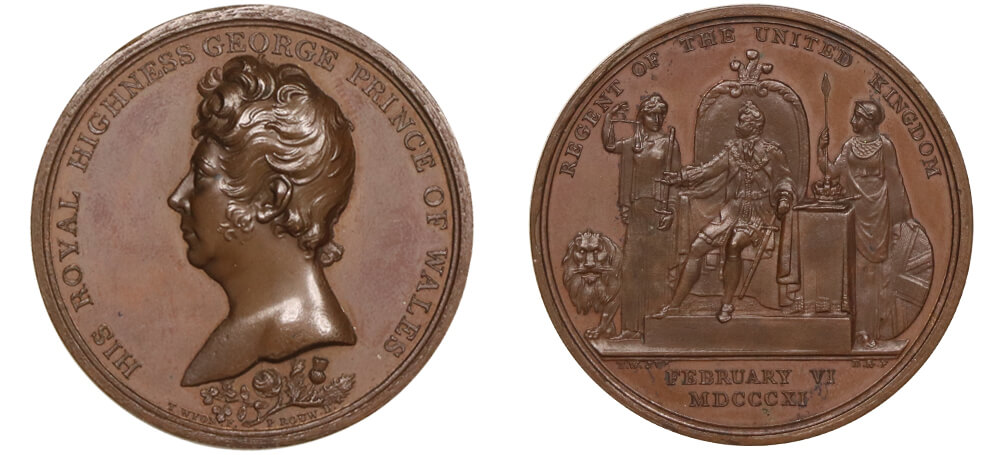George IV Regency Medal 1811
King George III, suffered from bouts of severe illness. His condition is now believed to have been the metabolic disorder porphyria, but at that time it was simply thought of as a form of ‘madness’. George III had a remarkable reign and remains the longest serving British male monarch, though for nearly the last decade of it he was incapacitated and unable to govern effectively. His son George IV, the then Prince of Wales, or the ‘Prince of Pleasure’ as some described him, was appointed Prince Regent on 5 February 1811 to govern in his stead. This was the beginning of the grand Regency Era.

A medal was produced to commemorate the Prince Regent’s new role. On the obverse of the medal is a portrait of the bareheaded Prince Regent. Underneath the uncovered bust lies a spray of symbolic shamrocks, roses and thistles. This design was engraved by Thomas Wyon Jr., after the work of Peter Rouw, a sculptor. Originally from Germany, Wyon’s family had established themselves in privately run mints in Birmingham. The youthful Thomas Wyon Jr. joined the Royal Mint’s Engraving Department in 1811, the first of six of his family who were employed by the Royal Mint over the course of a century. Thomas Wyon Jr. was described as ‘a young Artist of promising abilities’ and this was shown both in this medal of the Regent, and of his promotion in 1815, while still in his early twenties, to Chief Engraver.
